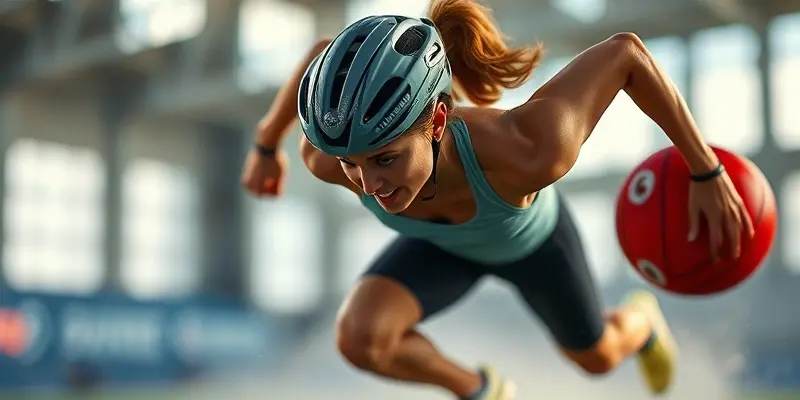Unlocking Recovery: Joint Stabilization Exercises for Injury Prevention & Healing
Ever tweaked your knee mid-run or felt that dreaded twinge in your shoulder after lifting? You’re not alone. Whether you’re new to fitness or a seasoned athlete, joint injuries can sideline your progress and deflate motivation fast. But what if a smarter approach to training could keep you strong, pain-free, and on the move? In this guide, you’ll discover the foundations of joint stabilization, learn the best exercises and tools for recovery, and walk away with a plan you can start this week.
Understanding Joint Stabilization
What Is Joint Stabilization?
Joint stabilization refers to your body’s ability to control movement while protecting your joints. Think of it like the foundation of a house—strong stabilization keeps everything balanced, aligned, and secure, no matter what activity you throw at it.
Why Does It Matter for Recovery & Performance?
Strong stabilizing muscles support your joints during dynamic movements, reducing your risk of strains and sprains. For athletes, this means fewer setbacks and faster returns to training after injury. For everyday enthusiasts, it means picking up groceries or playing with your kids—pain-free.
The Best Joint Stabilization & Recovery Exercises
Ready to level up your support system? Here’s a shortlist of practical, beginner-friendly moves that pack a punch:
-
Planks & Side Planks
Build core and shoulder stability. Start with 20–30 seconds and progress as you get stronger. -
Squats & Lunges
Strengthen quads, hamstrings, and glutes for knee, hip, and ankle support. Focus on form, not depth. -
Resistance Band Moves
Include external shoulder rotations and lateral leg raises. Bands make joints work in all directions—key for real-life stability. -
Balance Work
Single-leg holds, yoga, or even standing on a cushion. Challenge your balance twice a week to fire up your smallest stabilizers. -
Bridges
Target glutes and core, essential for pelvic and lower back health.
Pro tip: Start with bodyweight and slow tempo. Quality reps beat quantity!
Preventing the Most Common Injuries
You’re only as strong as your weakest link. Here’s how to bulletproof the joints most prone to trouble:
-
Knee & Ankle Sprains
Regular squats, lunges, and balance drills keep knees and ankles stable, especially during quick direction changes. -
Shoulder Strains
Strengthen your rotator cuff and upper back with resistance bands. Scapular retraction exercises teach your shoulders to “set” under load. -
Hip Injuries
Combine lateral movements with core and glute activation. Hips thrive on multidirectional work—think lateral lunges or monster walks with a band.
Nutrition: Fuel Your Healing
Your body heals best when it’s well-nourished. Focus on:
- Protein for tissue repair (eggs, chicken, tofu)
- Omega-3s to reduce inflammation (salmon, walnuts, flaxseed)
- Vitamin C & Zinc to boost collagen and speed healing (citrus fruits, bell peppers, nuts)
- Hydration for joint lubrication and recovery
A balanced diet isn’t just about macros—it’s your secret weapon for faster, better healing.
Tools & Gadgets for Faster Muscle Repair
Sometimes, a little tech goes a long way:
-
Foam Rollers & Massage Guns
Daily rolling improves circulation and eases tightness post-workout. -
Stability Balls & Balance Boards
Add them to standing or seated moves for next-level proprioception—your body’s internal GPS. -
Resistance Bands
Lightweight and portable, perfect for targeting small stabilizers in shoulders and hips.
Staying Motivated During Recovery
Rehab isn’t just physical—it’s a mental game. Try these methods to keep your head (and heart) in the game:
-
Set Small, Achievable Goals
Celebrate progress, even if it’s just a few pain-free steps. -
Visualization
Picture yourself moving pain-free, even on rest days. Learn more about the power of visualization for healing. -
Mindfulness
Acknowledge setbacks but focus on what you can control. Use rehab as a chance to master new skills. -
Stay Connected
Lean on support from friends, coaches, or the GymPulse community.
Sample Weekly Joint Care Plan
Here’s a flexible, evidence-based routine to build your base:
Monday: Core (planks, bridges)
Wednesday: Lower body (squats, banded lateral walks, balance work)
Friday: Upper body (shoulder bands, side planks)
Daily: Nutrition focus + quick foam rolling
Start with 2–3 sets per exercise, 8–12 reps (or 30 seconds for holds). Gradually increase as you grow more confident.
Final Thoughts: Stay Strong, Stay Active
Joint stabilization is your ticket to staying in the game—whatever that looks like for you. Consistency with these exercises, smart nutrition, and the right support tools will lower your injury risk and speed your recovery. Questions or struggles? Share them with the GymPulse community. We’re here to help you move better for life!
Ready to take action? Save this post, try the weekly plan, and let us know your progress in the comments!
Written by your GymPulse fitness expert, combining science-backed know-how with years of coaching real athletes—just like you.

